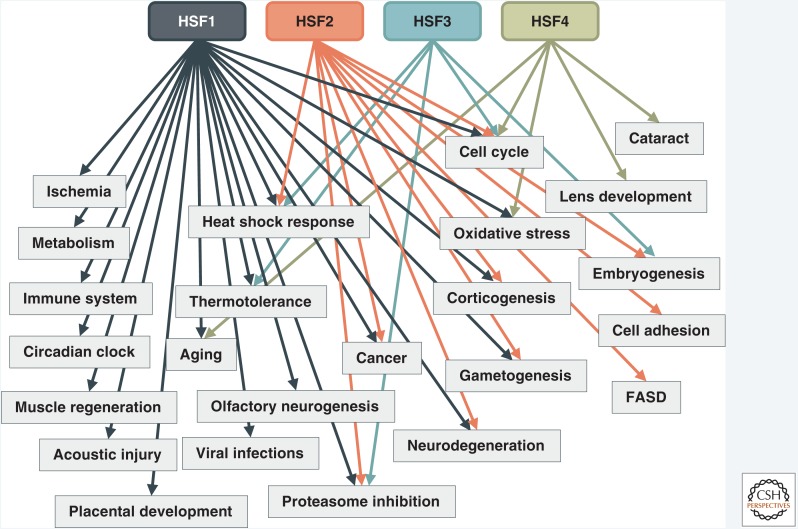Figure 3.
Vertebrate heat shock factors (HSFs) are linked to a diverse array of biological processes. Although originally identified as the main factors regulating cellular responses to acute heat stress, HSFs are currently linked to an extensive array of different physiological and pathological processes. Most of the processes have been studied in the context of HSF1, and much less is currently known about the biological relevance of HSF2, HSF3, or HSF4. References for the processes that are not discussed in the main text include HSF1, ischemia (Higashi et al. 1995; Nishizawa et al. 1996); HSF1, muscle regeneration (Nishizawa et al. 2013); HSF1, acoustic injury (Sugahara et al. 2003); HSF1, immune system (Inouye et al. 2004); HSF1, viral infections (Filone et al. 2014); HSF1, circadian rhythm (Reinke et al. 2008); HSF1, oxidative stress (Ahn and Thiele 2003); HSF2, embryogenesis (Mezger et al. 1994); HSF3, cell cycle (Nakai and Ishikawa 2001); HSF3, embryogenesis (Nakai and Morimoto 1993); HSF4, oxidative stress (Liao et al. 2018); HSF4, cell cycle (Tu et al. 2006); HSF4, aging (Shi et al. 2008); and HSF1, HSF2, and HSF3, proteasomal inhibition (Kawazoe et al. 1998). The arrows depict the association between a distinct HSF family member and the process. FASD, fetal alcohol spectrum disorder.

